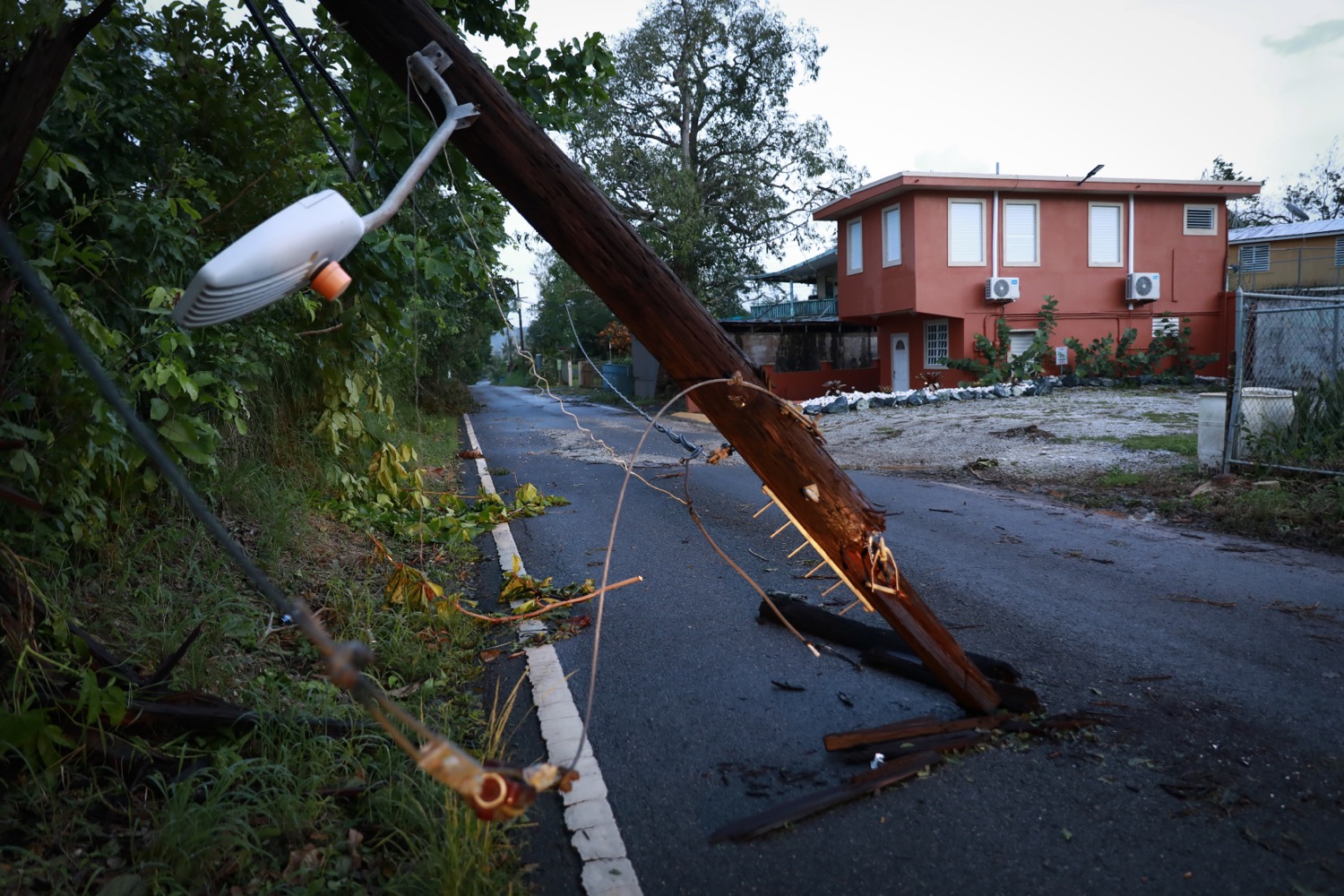

Its lights outs for Puerto Rico, again. After dealing with devastation to the electric grid from Hurricane Maria five years ago, the US territory has struggled to create a hurricane-proof way to protect themselves from future blackouts. Now, two weeks after Hurricane Fiona swept over the island, a quarter of Puerto Rico’s residents are still without electricity. While efforts are underway to restore power locally, there’s been a revival of interest in transitioning to renewable energy—from leaders igniting conversations to locals rallying protests. Experts say diversifying the grid will help to “climatize” the energy system, reducing the chances of another island-wide blackout while simultaneously cutting residents’ carbon footprint and energy costs.
“We had a very fragile grid before the hurricane, and we hadn’t made the long-term repairs that needed to be made,” explains Sergio Marxuach, the policy director and general counsel at the Center for a New Economy in Puerto Rico. “But it’s old technology, and eventually the entire world needs to move to renewables due to climate change.”
In 2019, Puerto Rico passed a climate law mandating 100 percent of the island’s electricity come from renewable sources like solar and wind-powered facilities by 2050. While that’s still decades away, the territory has struggled to ramp up renewable energy use and phase out fossil fuel. Fossil fuels currently make up 97 percent of Puerto Rico’s electricity. In 2021, natural gas made up 44 percent of the total energy followed by petroleum at 37 percent. Benchmarks towards the 2050 plan include becoming 50 percent renewable by the end of the current decade, but the number is currently only at two to three percent, according to Max Lainfiesta, a manager at the Rocky Mountain Institute’s (RMI) Islands Energy Program.
[Related: Hurricane Fiona leaves most of Puerto Rico without power]
There are several short- and long-term routes Puerto Rico can take to reach its renewable energy goal. Marxuach says that right now Puerto Rico has an island-wide interconnected grid, but that current structure has a significant weak point. “If one part of the grid goes down, everything else shuts down because of the way [they] built the system to protect itself,” he explains. Creating seven to eight regional grids stationed across the island would not only prevent future disruptions to infrastructure, but would also slowly introduce renewable energy to areas and create locally sourced power. This segmented system can boost larger infrastructure, but also function independently when there is a hurricane or other disastrous event.
However, Marxuach acknowledges there are some challenges to creating an interconnected energy grid. For one, there’s been debate on how much renewable energy can be incorporated to the island right now, and whether Puerto Rico has the energy storage technology to overturn the entire system. Another issue is the geography of the island. He says that even though Puerto Rico is only 3,515 square miles—three times the size of Rhode Island but smaller than Connecticut—there are mountains and isolated communities that could make it difficult to establish new transmission lines for regional grids.
What’s more, Marxuach says the US government has already approved $12 billion dollars to get the renewables transition underway in the territory, but bureaucracy from federal agencies such as FEMA and the Department of Energy had slowed down efforts to start using the funds before the hurricane. “Ironically, the new hurricane gave us a window to start a new reconstruction process to deal with the damage caused by Fiona and get moving on the grid,” he notes. “There are things we can do by next year to be better prepared, but the real modernization and phasing out natural gas will take more than five to eight years.”
[Related: You’ll need to solve Puerto Rico’s debt crisis to win this new board game]
Lainfiesta points out that because of the unreliability in the grid, residents have taken matters into their own hands and have invested in solar-plus battery systems for their homes. But from his perspective, these can get very expensive and further deepen the gap between higher- and lower-income neighborhoods on the island. People in middle- and lower-class neighborhoods cannot afford to pay for expensive installations and are usually the last to be reconnected after a power outage. The RMI team’s approach to “climatizing” Puerto Rico is to prioritize critical facilities—areas whose services are necessary for the community—first. Called the Community Energy Resilience Initiative, Lainfiesta and his collaborators help finance solar and storage microgrids for places such as pharmacies, grocery stores, and gas stations, so that in an event of another blackout, people have a way to buy food and water, charge their phone, and get their medicine.
“In Puerto Rico, everyone is talking about electricity, because people have been suffering from poor [utility] service all the time,” Lainfiesta explains. Costs are topping 30 cents per kilowatt hour (the average in the US is about 12 cents per kilowatt hour) for an unreliable grid, “and the most vulnerable population are mostly the ones paying for it,” he adds. The silver lining is that the recent hurricanes have motivated people in Puerto Rico, and possibly others worldwide, to talk and make real efforts to adopt renewable energy.
